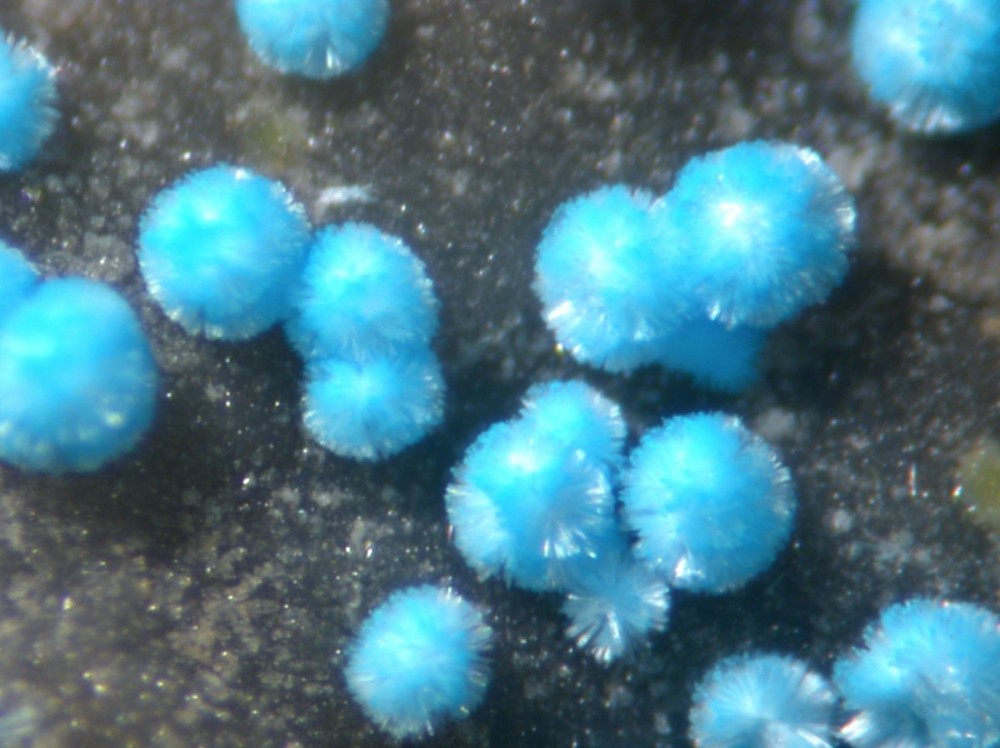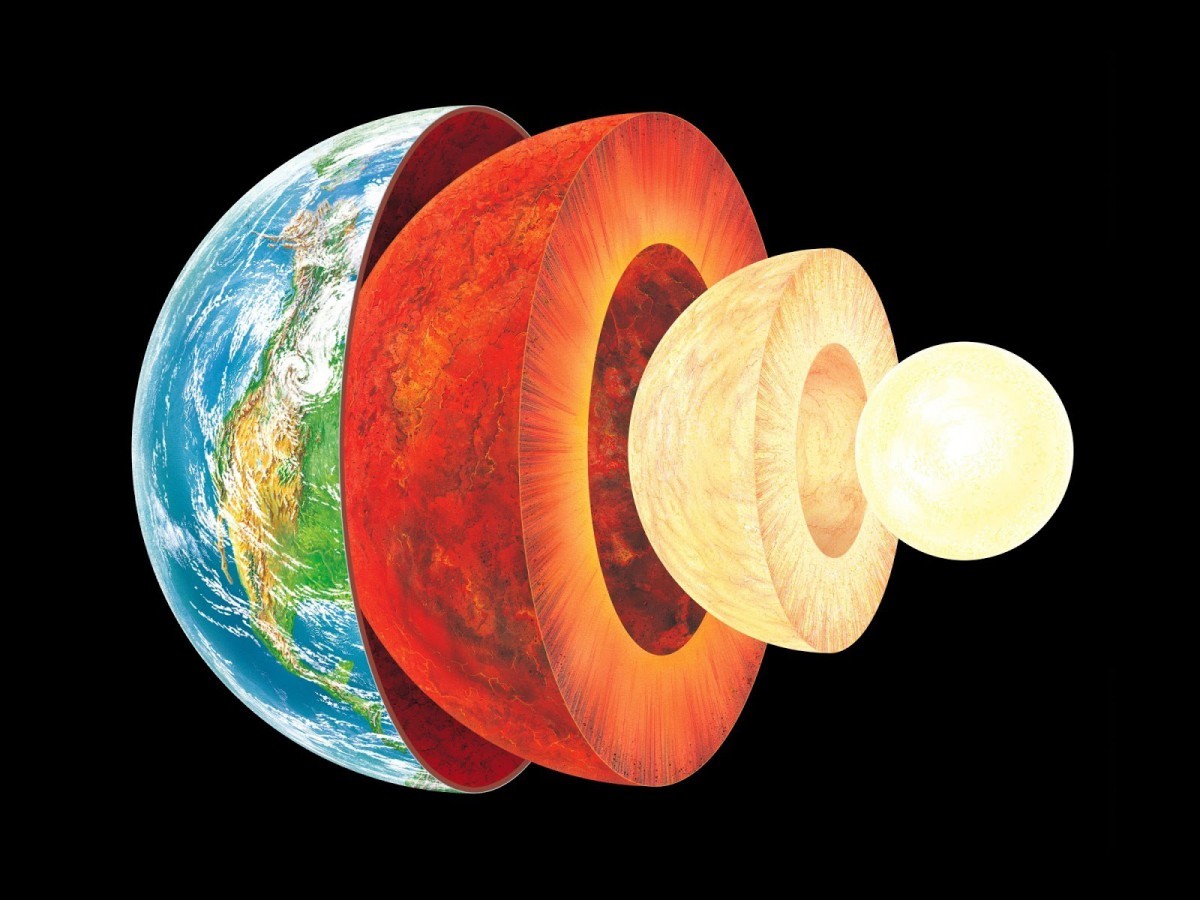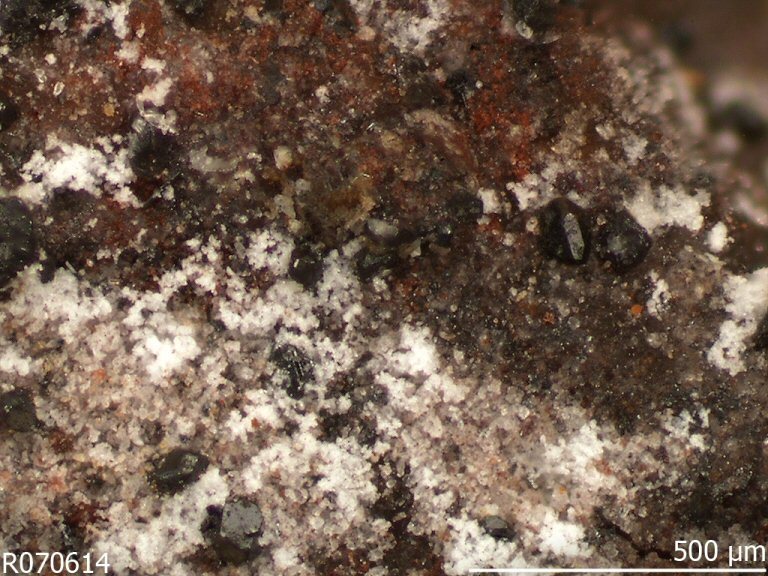The catalog of the rarest minerals on Earth has been compiled for the first time.

Nevadait with the chemical formula Cu 2 Zn 0.02 V 3+ 0.98 Al 1.15 Al 8 P 7.9 O 32 F 8.37 (OH) 1.63 (H 2 O) 21.65 is one of the rarest minerals. It is formed from vanadium and copper in very specific and extreme environmental conditions. Microscopic bright blue crystals of nevadaite are found only in two places on the planet: in the Eureka district (Nevada, USA) and at a copper mine in Kyrgyzstan
To date, 5090 minerals have been discovered on our planet. This is the amount officially approved by the International Mineralogical Association, which is engaged in the classification of these chemical compounds. This includes only terrestrial minerals, but does not include substances such as ethanol C 2 H 5 OH or acetylene C 2 H 2 , which are named among the possible minerals on the surface of Titan (surface temperature -179 ° C), but have not yet come across in crystalline form on the ground. Theoretically, the same carbon dioxide CO 2 with a freezing point of -78.5 ° C could fall in crystalline form on Earth, for example, in August 2010 in Western Antarctica, when NASA recorded a temperature record of -94.7 ° C, but he was not found. Otherwise, CO 2 would also be included in the list of terrestrial minerals, but for now it is included only in the list of minerals on Mars.
Less than a hundred of the most common minerals occupy more than 99% of the earth's crust, and only a few of the most common are about 60% of the volume. For a true geologist, a real treasure is not some kind of commonplace diamond, which is like mud on earth, but rare minerals. Some enthusiasts dedicate a lifetime to their search.
')
According to the international classification, a rare mineral is considered to be one that is found only in five or less locations on Earth. At the same time, many rare minerals were found in only one place.
Surprisingly, out of 5090 terrestrial minerals, more than 2500 are rare. Such substances are formed in incredibly rare environmental conditions, in places where all the necessary chemical elements are collected in the correct proportion, the ideal temperature and pressure are created, and all this amazing set of circumstances is preserved for the necessary time to form the mineral. In a sense, these rare minerals are a kind of "mistakes" of nature. As an elusive bug in the program, which you once noticed, but you can never play.

Ichnusait, one of the rarest minerals in the world, was found only in one place on Earth.
A unique combination of several factors leads to the formation of such minerals, which are more rare than the most expensive gems. The total world production of some of these minerals is less than a single diamond.
Unfortunately, since rare minerals form in extremely unusual environmental conditions, some of them melt in the usual atmosphere. Others completely evaporate or decay when exposed to sunlight. However, the discovery of such minerals gives important information to geologists that some specific conditions were present at a particular time in a particular place on the earth's crust. This is very important for the formation of a general picture of geological history. And even helps to study the formation and evolution of life on our planet.
Recently, Dr. Robert Hazen of the Carnegie Institute Geophysical Laboratory, together with Jesse H. Ausubel of Rockefeller University (USA) published a scientific paper in the journal American Mineralogist , which described the origin and importance of the rarest minerals on Earth .
Mineralogists formulated four criteria, of which at least one is characteristic of each rare mineral:
- Specific and extreme temperatures and pressures, often to a limited extent, during mineralization.
- The presence of extremely rare elements that are rarely found on the surface of the Earth and in the earth's crust (thin solidified outer layer above the plastic mantle abroad Mohorovichich ).

Earth structure - The presence of unusual environmental conditions, which are so different from normal, that the mineral is quickly destroyed in normal conditions.
- The difficulty of detecting the mineral: for example, inconspicuous microscopic crystals (for example, several rare minerals with tellurium were found only in the mountains of California, where they conducted extensive microscopic examination of samples - but it is likely that such minerals can be found in many other places where they did not conduct such studies) , unusual location, hard-to-reach place, difficulty of recognition in a series of similar minerals by crystalline morphology, color, etc.
A list of some rare minerals, chemical formulas, criteria for rarity (columns 1-4 correspond to items 1-4 in the above-mentioned list of criteria) and features

Dr. Hazen also notes that many of the gems that are considered rare are actually found in abundance in many places around the world, are mined and sold on an industrial scale: diamonds, rubies, emeralds and other precious stones. That is, in a scientific sense, they do not correspond to the definition of rare minerals. The use of the terms "rare elements" or "rare metals" is also incorrect, since many tons of such materials are mined every year, the authors of the scientific work emphasize. There is no talk of any “rarity” here.

Fingerite with the chemical formula Cu 11 O 2 (VO 4 ) 6
Among the rarest minerals on Earth is fingerite , which exists only in one well-known place: near the Isalco volcano in the Republic of El Salvador. Its formation also requires extremely rare environmental conditions. In addition, it is very unstable and dissolves in ordinary water, that is, it is washed off by rain.
But even fingerite can be called very stable compared to minerals that have hygroscopic properties. That is, these ephemeral stones absorb moisture from the surrounding air, and then dissolve in it.
The concept of ephemerality is also quite conventional, however. Many rare minerals degrade under normal atmospheric conditions in less than a day, while others require millions of years.
The catalog of minerals published in the American Mineralogist magazine contains only four rare minerals that meet all four rarity criteria. In addition to the finger (Cu 11 O 2 (VO 4 ) 6 ), it is also macbirneite (Cu 3 (VO 4 ) 2 ), stabilized (Cu 5 O 2 (VO 4 ) 2 ) and syesite (Cu 2 V 2 5+ O 7 ).
Some minerals are very rarely found on the surface of the Earth, although there must be a lot of them in the Earth’s mantle, where all the necessary conditions are necessary for their formation. An interesting example here is the perovskite phase MgSiO 3 , bridgmanite. It was found only in one place on the planet: in the impact crater of one meteorite. During the collision, the necessary combination of temperature and pressure was formed there for the crystallization of bridgmanite. He does not meet anywhere else. At the same time, such conditions of pressure and temperature are present in the earth's mantle. Scientists believe that bridgmanite in general makes up most of the material of the lower mantle.
The authors of scientific work draw attention to several interesting anomalies. For example, some chemical elements are less common in chemical compounds of rare minerals than others, although in the earth's crust there are more of them in percentage terms. For example, hafnium is twice as common as uranium. At the same time, hafnium is present in only one rare mineral, and uranium is more than 250. This is due to the fact that it is easier for uranium to be concentrated locally in the earth's crust and, thus, to participate in mineralization than hafnium, which is similar in chemical properties to zirconium.
Search and classification of rare minerals have a certain value for chemistry, biology, geology, astronomy and other natural sciences. At the same time, this in itself is an amazing and fascinating activity. More than half of the minerals on our planet are rare, that is, found in five places or less. A stunning variety of forms, countless variations of colors and geochemical properties, compositional and structural characteristics of minerals - all this makes up the beauty of science.
Source: https://habr.com/ru/post/396085/
All Articles